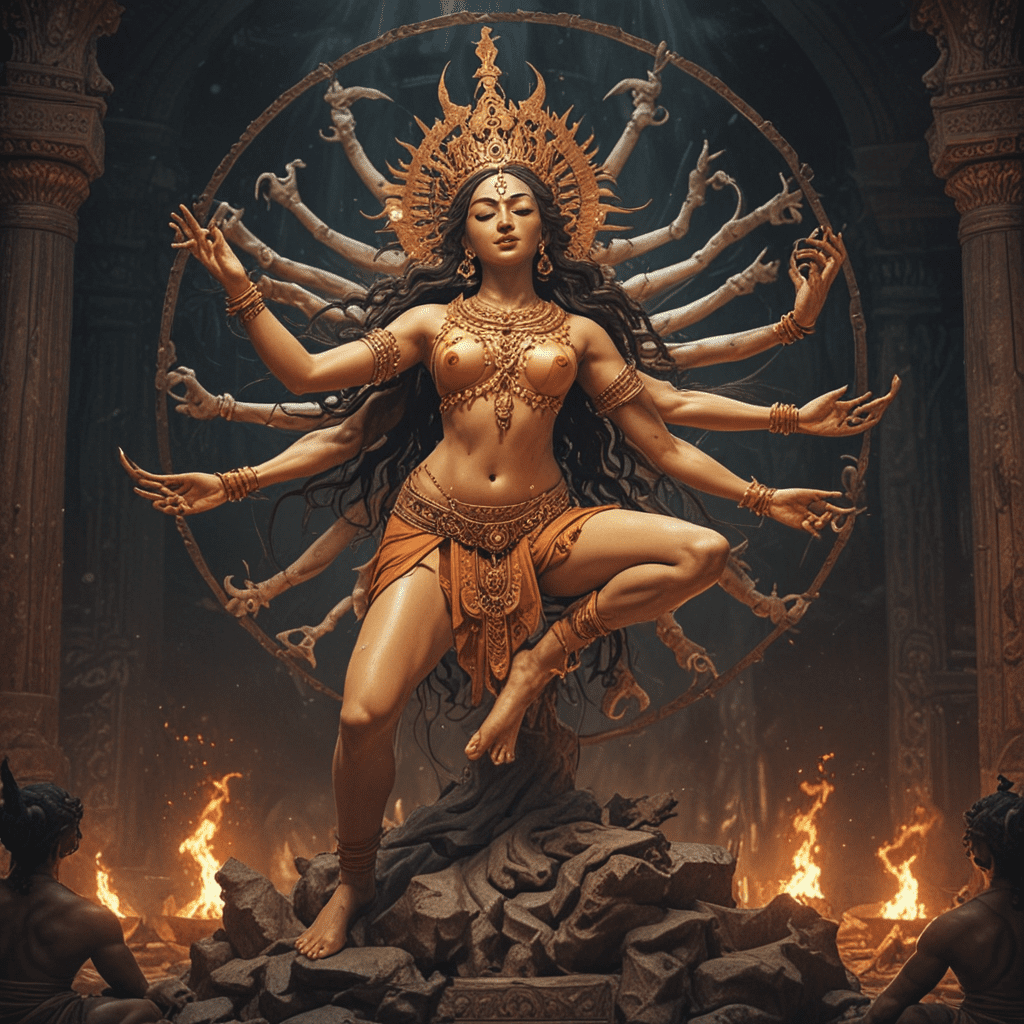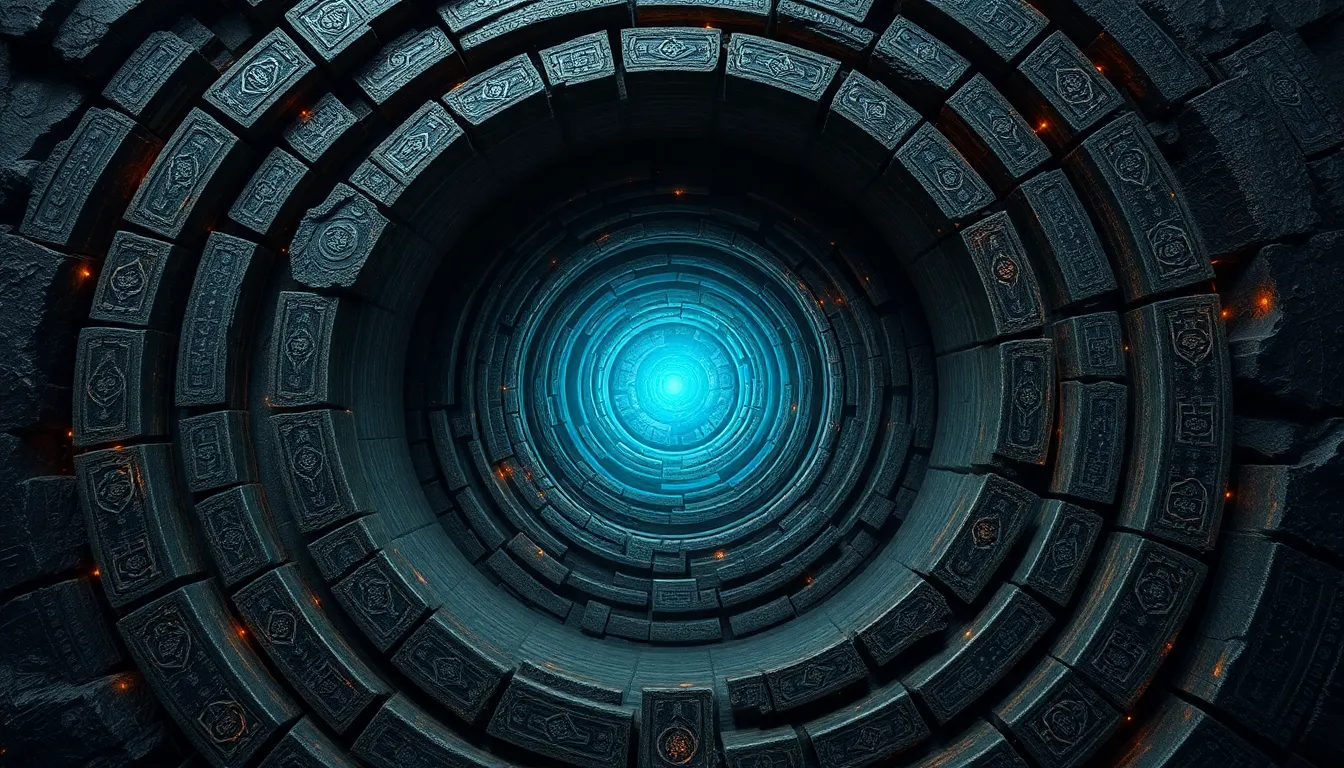The Myth of Chhinnamasta: The Self-Decapitated Goddess
Introduction
The myth of Chhinnamasta, the self-decapitated goddess, is a captivating tale that has resonated deeply within Hindu mythology and culture. It speaks to themes of sacrifice, detachment, and spiritual liberation, offering a profound exploration of the human psyche and the nature of reality. This myth has left an enduring mark on Indian society, influencing art, literature, and religious practices.
The Origin of Chhinnamasta
Chhinnamasta emerged from the goddess Durga, a powerful deity associated with protection and victory. The legend narrates that Durga, in a fierce battle against demons, severed her own head. Her severed head then manifested as Chhinnamasta, a radiant goddess who holds her head aloft in her left hand, symbolizing her triumph over darkness.
Iconography of Chhinnamasta
Depictions of Chhin
6. The Psychological Aspects of Chhinnamasta
Chhinnamasta's myth delves into the depths of the human psyche, exploring the unconscious mind and self-destructive impulses. Her self-decapitation symbolizes the shedding of ego, the surrender of attachments, and the confrontation of inner demons. Through her sacrifice, Chhinnamasta represents the transformative power of confronting darkness within ourselves, leading to renewal and liberation.
7. Mythological Parallels
The myth of Chhinnamasta finds parallels in other Hindu self-sacrifice stories. Dakshayani, the wife of Shiva, sacrificed herself in protest against her father's disrespect for her husband. Sati, the consort of Shiva, similarly sacrificed herself upon hearing of her husband's perceived insult. These myths highlight the power of sacrifice in Hindu mythology, representing the ultimate act of devotion and liberation.
8. Chhinnamasta in Contemporary Art and Literature
Contemporary artists and writers have found inspiration in the myth of Chhinnamasta. Her imagery has been explored in paintings, sculptures, and literature, offering new interpretations and perspectives on the goddess's symbolism. These modern interpretations reflect the enduring relevance of Chhinnamasta's myth in contemporary society, speaking to themes of transformation, empowerment, and the search for spiritual meaning.
9. Cultural Impact of Chhinnamasta
The myth of Chhinnamasta has had a profound impact on Indian culture. Her legend is recounted in folk tales and popular literature, shaping the cultural narrative around sacrifice, devotion, and liberation. The goddess is revered in temples and shrines dedicated to her, where devotees seek blessings and guidance on their spiritual journeys. Chhinnamasta's influence extends beyond religious practices, permeating the arts, literature, and cultural traditions of India.
10. Conclusion
The myth of Chhinnamasta, the self-decapitated goddess, is a powerful and enduring tale that explores the depths of human nature, sacrifice, and liberation. Through her iconography, psychological symbolism, and cultural impact, Chhinnamasta represents the transformative power of confronting darkness, embracing detachment, and seeking spiritual awakening. The goddess's myth continues to resonate with individuals seeking to understand the complexities of life and the path to spiritual fulfillment.
FAQs
Q: Who is Chhinnamasta?
A: Chhinnamasta is a Hindu goddess known for her self-decapitation. She symbolizes sacrifice, detachment, and spiritual liberation.
Q: What is the significance of Chhinnamasta's self-decapitation?
A: Chhinnamasta's self-decapitation represents the shedding of ego, surrender of attachments, and confrontation of inner demons. It symbolizes the transformative power of sacrifice and the path to liberation.
Q: In what ways has Chhinnamasta influenced Indian culture?
A: Chhinnamasta's myth has influenced Indian culture through folk tales, popular literature, temple rituals, and artistic representations. Her legend speaks to themes of sacrifice, devotion, and liberation, shaping the cultural narrative around these concepts.
Q: What is the psychological meaning of Chhinnamasta?
A: Chhinnamasta represents the exploration of the unconscious mind and self-destructive impulses. Her self-decapitation symbolizes the confrontation of inner darkness and the transformative power of confronting it, leading to renewal and liberation.
Q: How is Chhinnamasta portrayed in contemporary art and literature?
A: Contemporary artists and writers have found inspiration in Chhinnamasta's myth, offering new interpretations and perspectives on her symbolism. Her imagery has been explored in paintings, sculptures, and literature, reflecting the goddess's enduring relevance in contemporary society.




